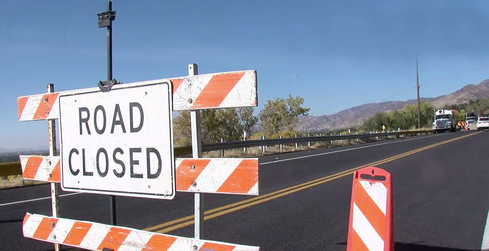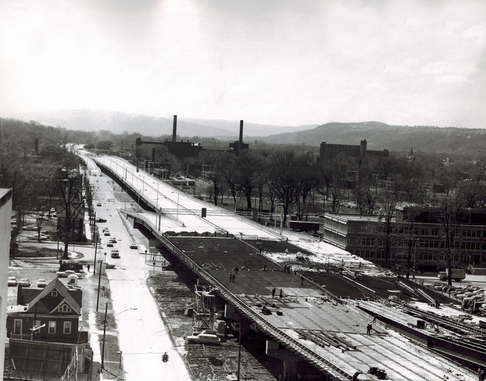David Stairs

I was in Detroit last weekend.
Of all the cities in the realm, Detroit has the best claim of “first in freeways.” The first mile of paved road was laid in Detroit in 1909, just in time for the revolution in transport Henry Ford was planning to visit on the nation. This was before a transcontinental highway existed. Four years later the Lincoln Highway became the first coast-to-coast auto road in America. Dedicated in 1913, it ran from New York to San Francisco passing through 14 states.
The US highway system, first legislated as the Federal Aid Road Act of 1916, became the numbered system in 1926. By the late 1930s it was becoming apparent that the system would not be adequate much longer. The Interstate system was legislated during the Second World War, but little happened with the proposal until Eisenhower became president and made it a priority. He’d been impressed with the German autobahns that had sped his armies across Germany in the final days of the war.
The National Interstate and Defense Highways Act of 1956 established the means for financing a largely brand new series of 40,000 miles of limited access freeways across America. They would be maintained by the states, but the 114-billion-dollar cost was largely paid for by the federal government through a tax on fuel.
While the Interstate system increased both nationwide access to tourism as well as urban flight to suburbia, in some areas interchanges built directly through downtown areas eliminated whole neighborhoods. Other places experienced demonstrations opposing urban freeways that resulted in construction cancellations.
In Seattle I-5 through downtown resulted in the 1976 addition of a built-over Freeway Park. But all too often, as in Portland, Oregon, St. Louis, and Oklahoma City the interstate barged right through prime downtown neighborhoods. My hometown of Syracuse was a classic case in point of poor urban road design. Sixty years on the elevated Onondaga Interchange, heavily criticized for being built through a historically black neighborhood, is being redesigned as a grade-level road, with arterial traffic detoured onto a ring road around the city center.

Construction of the I-81 Onondaga Interchange through downtown Syracuse, late 1960s. Courtesy Onondaga Historical Association
My recent experience in Detroit, which is criss-crossed by freeways, revealed another problem with our urban roads: deferred maintenance. Care of the roadways is the responsibility of the states, but I-94, the heavily traveled east-west route through Detroit, is a welter of unavailable lanes and closed on-ramps, making for constant slow-downs and workarounds. I’d like to say this is inevitable in a place prone to road salt for bad winter weather, but it’s as much a matter of huge traffic volume, and heavy truck usage. And this latter is strictly a result of the shift from rail to road transport brought about by the Interstate system itself!
I have driven into or passed through at least a dozen large American cities on interstates in my life as a driver. In spite of generally reduced speeds through these interchanges, it always feels like a life-risking experience due to the enormous volumes of short-range urban traffic. I’ve nearly been involved in multi-car accidents in Chicago and Minneapolis— not an experience I will soon forget. And driving the freeways of LA is, well, a thing one could easily live a lifetime without.
For the most part, the US Interstate system, despite occasional re-designed improvements, feels increasingly like a mid-20th century utopian idea that was only partly successful. The long overland stretches linking the far-western states are useful since the wide-open spaces are vast. But in general the urban interchanges have only added to rather than reduced traffic growth, making them a hell-on-earth to drive.
David Stairs is the founding editor of the Design-Altruism-Project.










